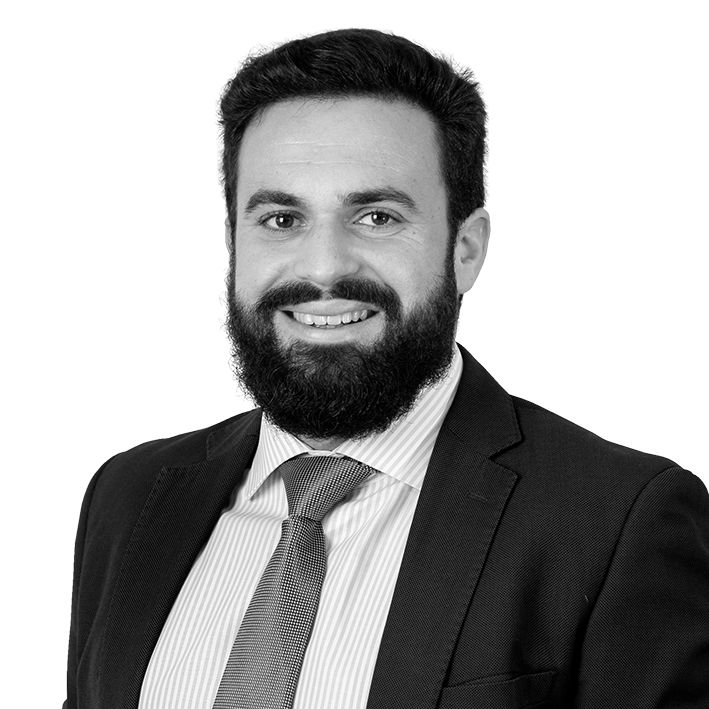'Digital twins' raise legal questions in an unregulated landscape
Real-world scenarios that are created virtually can offer huge opportunities but with challenging legal implications
Have you ever dreamed that you had a double, which you played as if it were a puppet to foresee particular situations and their outcomes? Have you ever thought: what would my life be like if I earned €1 billion? What if I lived in a superstar's body? Or what if I were a bird?
Such questions could be answered thanks to "digital twins". However, whether unfortunately or fortunately, digital twins are used, for the moment, predominantly for industrial or healthcare purposes.
What is a digital twin?
Let’s start with the basics. A digital twin is a virtual replica designed to accurately reflect a physical object, process or service (for example, a car, a building, an engine).
The digital twin – or the virtual model – is used to replicate processes in order to assess how the physical object reacts to changes but also make predictions about the future. The digital twin therefore allows maintenance and optimisation of the real object.
Put simply, digital twins allow the creation of real-world scenarios, but virtually.
How do digital twins work?
Digital twins typically rely on real-time data collected through sensors placed on the physical object. These sensors are used to produce data about different aspects of the physical object’s performance, such as energy production or response to weather conditions, for instance.
After receiving the data, the virtual model can be used to run simulations, study performance issues and generate possible improvements. After the simulation, the parameters are applied to the real objects in order to optimise their performance and avoid downtime and bugs.
For example, digital twins can be a real asset to the healthcare industry. Digital twins can help identify the most effective drugs and the optimal dosage. They could allow the test of a treatment and thousands of different types of drugs on a virtual patient in order to identify the best ones for a specific case before they are administered to a real patient. It is clearly better to test treatments on virtual patients than real ones.
Recently, doctors have been working with digital twins to provide better understanding of long covid and to develop better treatments.
Internet of Things and digital twins
The most effective use of digital twins could be when combined with the Internet of Things (IoT).
On the one hand, digital twins need real-world data to simulate situations and make decisions and, on the other hand, IoT devices can provide this data. As the IoT devices continuously collect data with their own sensors, they are particularly suitable for digital twins.
A popular use for digital twins is to carry out inspections of equipment or infrastructure installations, particularly in the energy and construction industries. Digital twins allow businesses to avoid putting human workers into dangerous environments. Effective data collection by IoT systems enables virtual inspections to be more detailed, while improving efficiency by avoiding unnecessary shut-downs of equipment or risk to workers.
Similarly, in Australian mining operations, IoT sensors are being used to create digital twins of huge pieces of mining equipment, allowing maintenance operations to be planned more efficiently, and preventing mine workers from being exposed to risks from mechanical failures or breakdowns.
Another application of digital twins is in combination with drone systems. In many instances, drones can be thought of as robots carrying IoT sensors. When equipped with the right sensors, drones can be used to collect datasets and enable the creation of digital twins of large-scale assets. For example, drones can be used to model and log the development of a construction site or can facilitate the analysis and inspection of complex infrastructure such as bridges and dams.
What are the legal implications?
The legal implications of the use of digital twins are various and, in the absence of a regulated legal framework, challenging. Legal clarification is required as to who is the rightful owner of the data (if there is an owner). The owner of the digital twin – that is, of the virtual replica – is likely to be the data controller, who, in the EU, will be required to comply with the General Data Protection Regulation.
In addition, in situations with multiple parties and multiple data sources, digital twins could rely on data including errors. This raises liability issues, particularly if automated decision-making systems have also been involved in modelling.
From a French law perspective, the digitalisation of buildings raises legal questions. For example, the legal concept of a “building” has already been challenged, with the Paris Court of Appeal ruling in 2017 that a home automation device could not be considered as a “piece of work” and that it could not be considered as being inseparably linked to the foundation. In this regards, data from home automation devices usually belongs to the owners, who can allow the access to the data for digital twins since it brings them a direct benefit (predictions of future). However, the data could be sold in the future. It is, therefore, important to determine ownership of the data and what rights the owner has regarding its use.
In the UK, Osborne Clarke has previously commented on the UK's National Digital Twin project (the NDTp), which intends to create "an ecosystem of connected digital twins to foster better outcomes from our built environment". As digital twins, in general – and the NDTp, in particular – rely on the collection of large amounts of data, clear governance of the use of data is necessary to prevent the technology from being misused and to ensure that it is trusted by consumers, as engagement and acceptance by the public will be essential for future adoption and development.
From an industrial application perspective, a number of big Spain-based digital twin projects that involve the collaboration of private and public entities have shown that the industry is struggling to cope with the large amounts of data needed to operate these systems and software. They have also demonstrated that digital twins are a good example of direct industrial applications of big data and machine-learning technologies. The projects also brought to light that the deployment of digital twin systems or software may involve complex interoperability licence agreements with the owners of the systems with which the digital twins or software operates for reading and sourcing data.
The IoT sensors collecting the data to be used in digital twins in the UK will benefit from future regulation of the safety and security of connected devices, such as the Product Security and Telecommunications Infrastructure Bill introduced in Parliament in November 2021. The outcome of the UK government's ongoing call for views on managing cyber security in supply chains will also help guide industry towards effective regulation of connected supply chains, the data collected from them and the digital twins that data will inform.
As with almost all applications of IoT technology, security by design and privacy by design are crucial elements in protecting both consumers and infrastructure from harm.
As regards the intellectual property (IP) rights protecting digital twins systems and applications, in Spain, certain commentators in the field of industrial property (patents and industrial designs) have speculated about the patentability of digital twins systems or software. The critical point analysed is that software is not patentable under Spanish law if it does not solve a technical problem, which increases the patentability requirements. It has been suggested that the patentability of computer-based simulations may be defended provided that the novelty, inventive activity and technical application requirements are met. The Enlarged Board of Appeal of the European Patent Office held this year in a case dealing with computer-based simulations (G 1/19) "that existing case law regarding computer-implemented inventions also applies to computer-implemented simulations", which may open the door for optimism around the protection of digital twins.
Among the legal implications most commented on when dealing with technological breakthroughs, there is always the liability angle. As with many other ground-breaking technologies, digital twins resemble another example of a variety of potentially liable parties coming into play. While "what ifs" pile up in the reader's mind, it may be useful to note that digital twins projects can involve many players at the same time: the technological enabler, the service provider, the customer, third-party software and hardware owners, service providers using the digital twins system or software, and more.
These are just a few examples but there is no doubt that the range of potential legal issues will expand as the use of digital twins evolves.
Connect with one of our experts

Laurène Zaggia, Lead author Senior Associate, France laurene.zaggia@osborneclarke.com +33 1 84 82 45 98

Samuel Martínez Lawyer, Spain samuel.martinez@osborneclarke.com +34 91 576 44 76

Mario Gras Lawyer, Spain mario.gras@osborneclarke.com +34 91 576 44 76

Thomas Stables Associate, UK thomas.stables@osborneclarke.com +44 207 105 7928